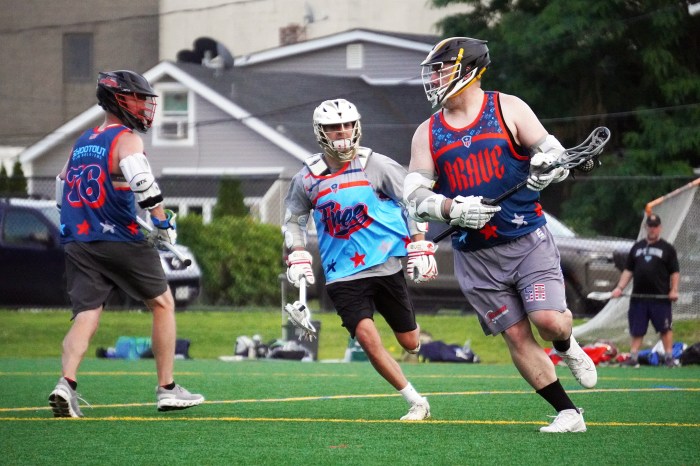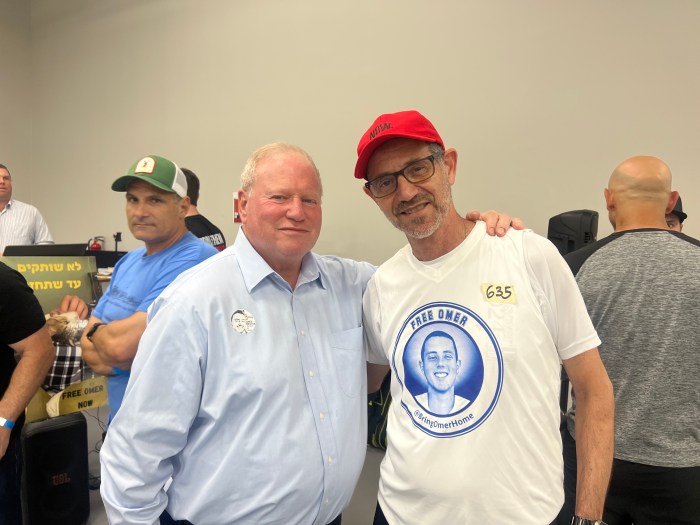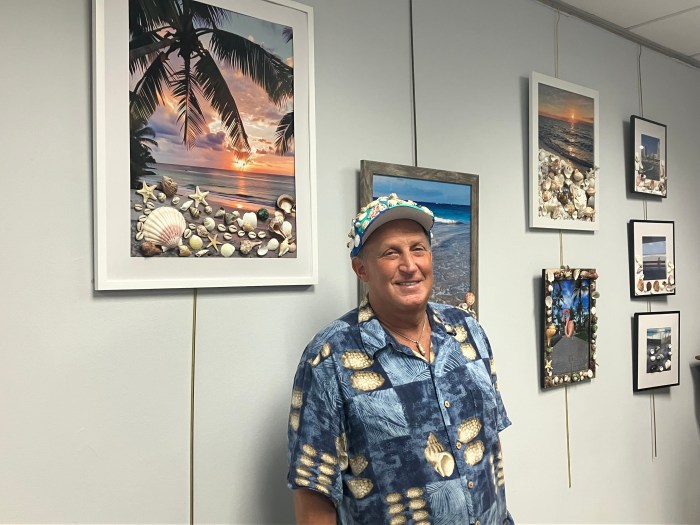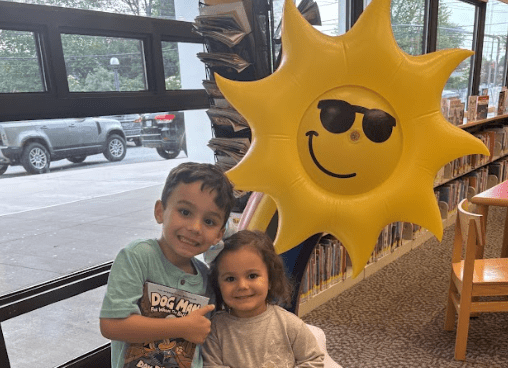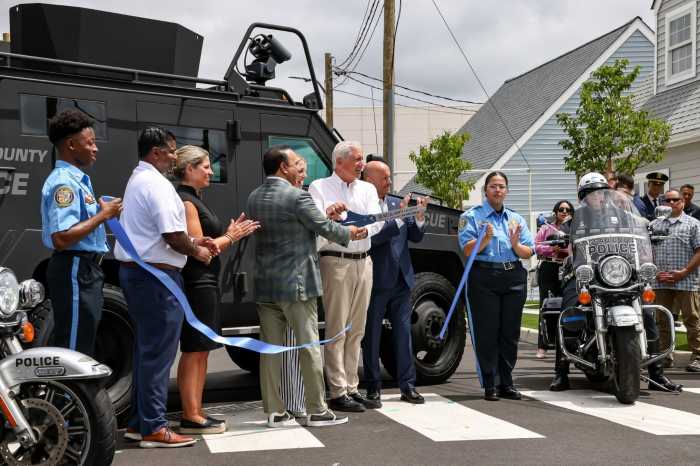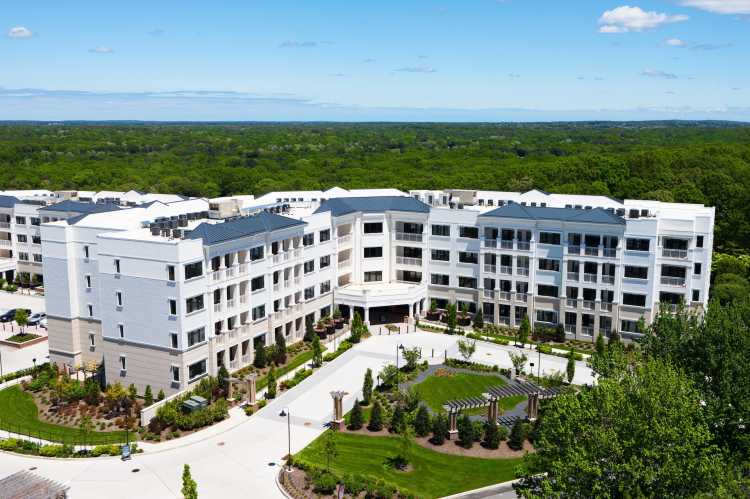St. Dominic R.C. Church hosted an Avianca Flight 52 reunion, 20 years after the crash of the plane in Cove Neck. Father Kevin Smith, pastor of St. Dominic’s, called the landing of the Avianca plane – a miracle on the hill. “It landed in one of the most unpopulated areas on Long Island and no one on the ground was killed. It was a miracle on the hill,” he said. Another miracle is that Father Smith was at the site. “I remember the children, their voices and cries,” he said.
On Jan. 25, 1990, through a series of tragic miscommunications and human error, Avianca Flight 052 crashed in Cove Neck, killing 73 people (passengers and crew).
Avianca Flight 52 was a regularly scheduled flight from Bogotá to New York’s John F. Kennedy International Airport via Medellín, Colombia’s José María Córdova International Airport. On Thursday, January 25, 1990, the aircraft performing this flight, a Boeing 707-321B registered as HK-2016, crashed in the village of Cove Neck, after running out of fuel. Eight of nine crew members and 65 of 149 passengers on board were killed.
Father Kevin told the audience his part of the story on Sunday, Jan. 24. He said, “Twenty years ago tomorrow, I was at dinner. I had been ordained as a priest about a year and a half earlier, in 1988. I was assigned to St. Joseph’s Church in Ronkonkoma and previously, throughout college and in seminary I was a medic in the volunteer Ambulance Corps in Queens. I listened to the radio and heard about the plane crash and that they needed a priest. I went by car to Huntington and met a National Transportation Board Safety official who said, ‘Hop in with me Father, I’m going to the top.’ He took us to Tennis Court Road.
“It is so interesting that 20 years later, I received a phone call from Dr. Fornari asking to use St. Dominic’s for the service and I said, ‘Of course you absolutely can use the church today. Many people would be coming, members of the families who lost loved ones in the crash; survivors and responders. They came from all different places’.”
At the crash site Father Smith helped out on John McEnroe’s father’s tennis court that was being used as a helicopter landing pad. “I was just helping out on the tennis court helping prepare survivors for the flight to the hospitals,” he said.
“After Avianca I became a fire chaplain to respond whenever people are in need. I am now the Oyster Bay Fire Company #1 chaplain and am a Nassau County Fire Chaplain. We work with the Critical Incident Stress Team, a trauma response team for major emergencies,” he said.
In his sermon he had quoted from St. Paul’s First Letter to the Corinthians who said, “Jews, Greeks, slaves or free men we are all the family of man. Inside of ourselves we are all called to reach out to make the broken whole. Like at the plane crash, every person worked together and many lives were saved. The help received included the spotlight that a cameraman lit to light the scene. You couldn’t land a helicopter on the road and they used the McEnroes’ tennis court.
“Together we made a positive result. And so many people came back to be remembered and be comforted. When we are in need, people reach out to each other.”
He said Sunday, many of the stories could be told: those of the Red Cross, Fire Department, EMS, and families here today. The rescuers who were there 20 years ago are still here today, he said and added, it was important that “we not let tragedy rule our lives.”
Red Cross Memories
One of those Red Cross volunteers at the scene was Larry Plavin who said he received his call to the Avianca site by email from the Red Cross. He was on one of the meal crews. “I couldn’t look at Kentucky Fried Chicken again. We were there three or four days at the site during recovery. They had to get everything cleaned up and they were searching for body parts.”
He said. “One of the women who was with us at the time is no longer with the Red Cross. She was having flashbacks to the scene. I told her to speak to one of the mental health providers,” he recalled.
Joan Imhof of Bayville was at the church to meet the survivors. She was with the Red Cross and was the person who organized a meeting with the rescuers at the Oyster Bay High School to deal with the stress after the crash. At St. Dominic’s Ms. Imhof was re-united with survivor Margie Lawder, whom she had helped.
Survivor Jessica Lawder
A lovely young girl, Jessica Lawder, with the radiance of one well-loved was also there. “My mother is a survivor. She lost her ‘almost fiancé’ on the flight. They loved each other very much. She was 24 when it happened. I’m carrying a rose. We are going to the site and I am going to put it there for Miguel.”
She pointed to her mother and said, “Come meet my grandparents.” Seated together were Jack and Peg Lawder with their daughter Margie Lawder, now 44. Ms. Lawder said, “I was on my way back from Bogata with Miguel Olaya. I had been there to meet his parents and we were flying back to Kennedy Airport. We were almost engaged. Then my whole life completely changed. The one good thing in my life is Jessica.”
Margie Lawder had extensive injuries. She had a broken neck, back and other injuries – today she is in chronic pain. “I can walk and talk and work and am grateful to be rescued. I was sent to Huntington Hospital where Doctor Brickman and Dr. Schwartz worked on my injuries. I was in acute care for one month and then sent to Pennsylvania for four months in rehab.”
She said, “After waiting 20 years, I got to thank Tony and the firemen personally today.” Joan Imhoff greeted Margie warmly. “I had no clothing and the Red Cross dressed me,” said Ms. Lawder, hugging Joan.
Taking Care of Kids
Dr. Victor Fornari, director of child and adolescent psychiatry at the Zucker Hillside Hospital at North Shore LIJ, spoke at the St. Dominic service on behalf of the survivors. He said, “Now, 20 years later, each survivor wants to thank the rescue workers. All who helped rescue them, and each survivor can now say thank you. Thank you for your efforts. Some were young and now are grown up. The next generation is here too. All of them thank all the rescue workers.”
Dr. Fornari remembered the events after the crash. He said, “I was called in to the hospital and was there in the emergency room before they received the kids and I worked with them because I speak Spanish. There were 21 children who survived and most of them were treated at North Shore Hospital. I had the opportunity to work with most of them.
“The children all had broken bones as well as other injuries and stayed in the hospital for some time, so we had time to help a patient who lost a parent or a sibling and adults who lost a child. I worked with them every day for six weeks and wrote two articles about the experience.”
He wrote a chapter on his experiences with the Avianca Flight 52 crash, entitled Avianca Airline Crash: Implications for Community Health Care Response [that appeared in Severe Stress and Mental Disturbance in Children]. The chapter mentions, “Fortunately, a disaster mental health plan had been drawn up by the Nassau County Department of Mental Health, Mental Retardation and Development Disabilities two years earlier and had been integrated into the county’s Civil Preparedness Plan. The plan called for the provision of intervention for survivors, crisis intervention for relatives of victims and survivors, referral of survivors and relatives to community mental health services, treatment of rescue workers beyond their critical incident stress debriefing.”
He did a second article/chapter called The Aftermath of a Plane Crash Helping a Child Cope with Loss of Mother and Sibling, [that appeared in The Crises of Catastrophic Events and War] in which he details his work with one child.
When the patient he calls Mary finally is told that her mother and brother are dead, she is very sad. He visited her in her hospital room, filled with balloons and stuffed toys. She said, “I miss my mommy. I am so sad, sadder than I thought I could ever be.” He answered, “You are entitled to be sad. It is so hard to believe that she is dead.” “I am so sad,” she repeated crying. A friend in the room said, “But look, Mary, at all of the balloons and toys on your bed!” The doctor commented in his notes, “The friend seems to be sending the message that Mary must cheer up.”
He says out loud, “I think Mary is sad for a good reason. Do not cheer her up. If you try to, she will think that you don’t understand her.” The 9-year-old listened attentively and said, “My mother was so sweet.” The doctor responded, “Over the days and weeks to come, you will think a lot about your mommy – how special she was and how much you miss her. That is normal, Mary. It is important. Cry as much as you need to. I will bring you plenty of paper handkerchiefs.”
Dr. Fornari said, “When all the kids were out of the hospital, we established a group – a therapy program for children and families on Saturday mornings for two and a half years. We’d serve bagels and deli food and then give paper and crayons to the kids and talked to parents asking ‘How are you doing?’ Some stayed for the whole time, and some for six months. It was a safe place to heal and get back on track. I presented it nationally as a model. They adapted it for health-care response in a disaster and it is quoted in federal, state and national manuals, as well as by the United Nations, taking it as a model.”
In 1990, when the plane crashed, it was because of lack of fuel – if there had been a fire, there would have been nothing left – especially because the site was in a wooded area with little access. Dr. Fornari said, “Because of the site, it would have been hard to put out the fire and there would have been casualties on the land.”
EMT Carolyn Willson
Also at St. Dominic’s was Carolyn Willson, who was an EMT at the Avianca scene and is now the Red Cross volunteer chair of disaster services. She was familiar with Dr. Victor Fornari’s work with the children and adolescents.
She said at the time she was a Glen Cove EMS and received the page on Thursday, Jan. 25, to go to the hospital where they were ordered on to Cove Neck. About 15 responders, about four in a car, went to help. It took about 45 minutes to get there. “We were each assigned a patient and worked with them until they could get the ambulances ready to take them.
“The problem was that when the ambulances first arrived they took out all the equipment to help the survivors, the result was when they made the return run there was only one oxygen mask.” She sighed, and said, “There was a man and a woman in the ambulance and they were sharing the mask, but the man was going downhill fast and we had to make a decision to save the one we could, the woman. The man passed away in the ambulance.”
She said after they dropped off their patients they returned to the site. By the time they did, all the people had been transported to hospitals. She said originally they thought Oyster Bay High School was to have been used as a morgue but instead they decided to go to Nassau County Medical Center so they went there to support the families. “There I spent most of the morning responding to families looking for the relatives who were scattered around in various hospitals. I needed to get the names from the hospitals and most of the survivors were not speaking English, so it was difficult,” she said.
She then spent a month working at the Marriott with the families who had flown up to be with their surviving relatives. “That’s where Dr. Victor Fornari was very helpful. I met one of the survivors at Glen Cove Hospital to whom I became as close to as a sister – Astrid Lopez, who is now in Colombia.
“Dr. Fornari was the psychologist that worked with the children. Astrid was just turning 20 and he tried to help her. She had 25 surgeries and was in the hospital until June. She comes to the United States frequently. Dr. Fornari and I saw her in November. She was pulled from the plane and they at first put her with the deceased passengers, but one of the firefighters heard her moaning. Her brain had been exposed and two legs were crushed. In the hospital they considered amputating them but the orthopedic surgeon said to wait, to see how she stabilized or didn’t – before operating. The next day she was still alive and he started work on her legs and after many operations he saved them. Between the trauma and brain injury she had just a terrible time.
“Today, at 40, she doesn’t work. She visits her sister here periodically. She lives with her mother who takes care of her. Her mother is very worried about her and what will happen after she dies but Astrid doesn’t realize the problem. She doesn’t feel like herself – she has no sense of self. She can be despondent, but she always has a smile on her face and she likes to joke around but she doesn’t see a purpose to life anymore.
“She has seen many tragedies since the Avianca crash. She was in a car accident; then a motorcycle accident; then when driving with her brother, the brakes went and he died. She feels she is a jinx to people. It is so sad and she is such a sweet person. She feels like her life is a black cloud,” said Ms. Willson.
“Carolyn was Astrid’s angel. She took care of Astrid and her family,” said Dr. Fornari.
A Personal Stake
Ms. Willson had a personal stake in the Avianca crash. “At the time, my husband Tom was an airline pilot and was landing that night. The EMT I was with said, ‘you’re not going to come and see this.’ I said, ‘If it’s my husband, I want to be there. If not, what difference does it make.’ I learned to live with it when he was in the Air Force. He flew for 43 years and just retired.”
Ms. Willson continues to have an active life. “I work part time with Carla Santella in NYS Assemblyman Chuck Lavine’s office. I was the Glen Cove Deputy Mayor under Mayor Holzkamp. It’s been an interesting life. I have three living children and one not; and seven grandchildren; four are here and three are in Colorado – their father’s in the Army.”
Firefighters Thanked
All around the St. Dominic Social Room there were groups of people talking, many being interviewed by the media. Firefighters who were at the Avianca scene were being photographed. When Oyster Bay Firefighters Pete Hosey, Bill Ferris, John Bruckner, Anthony DeCarolis, Vincent Bellisimo, and Eddie Mirabito of Bayville were being photographed, Jessica Vasquez and her mother Luz stepped into the photograph. They were both on Avianca Flight 52.
Luz Vasquez said the flight changed her life and her daughter’s for the better. She was grateful that her daughter only remembered the emergency lights going on as the plane came down. Her daughter’s leg, back and arm were broken and her forehead was injured. “She doesn’t remember,” said Ms. Vasquez, gratefully.
Dr. Fornari remembered Jessica Vasquez and her mother. “Jessica was two and a half years old and participated with her mother (in the therapy group) and were very anxious and concerned. They have done very well,” he said, pleased with the success of his work.
A resident of East Norwich remembered coming home the evening of Jan. 25, and being surprised by all the sirens as fire trucks came up Route 25A and turned down Route 106 heading for Oyster Bay. It was still light but approaching dusk. All that evening the community kept hearing firetruck sirens as they rushed to the scene.
As a result of the melee that blocked the roads and made everything more difficult, emergency responders initiated a command system whereby responders were sent to a staging area instead of going directly to the scene. A practice drill was held at Newark Airport in October 2000. The staging area was the old Jersey Central Railroad Terminal at Liberty State Park. This system was used on 9/11, when local firefighters went to Roosevelt Raceway where members of the local firefighters waited to be assigned their duties.
A great deal was learned from working at the Avianca crash site.




